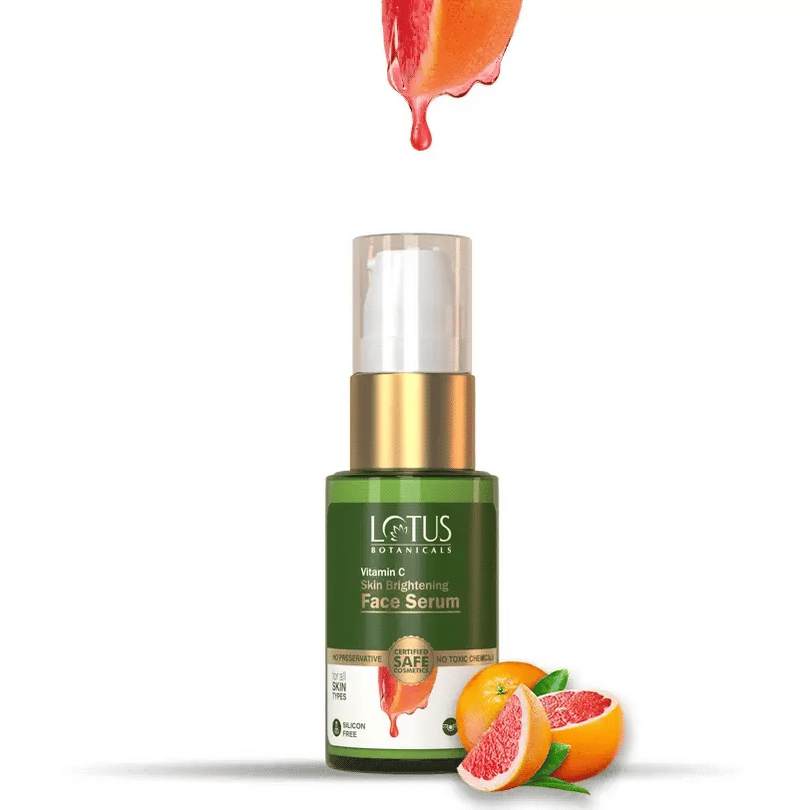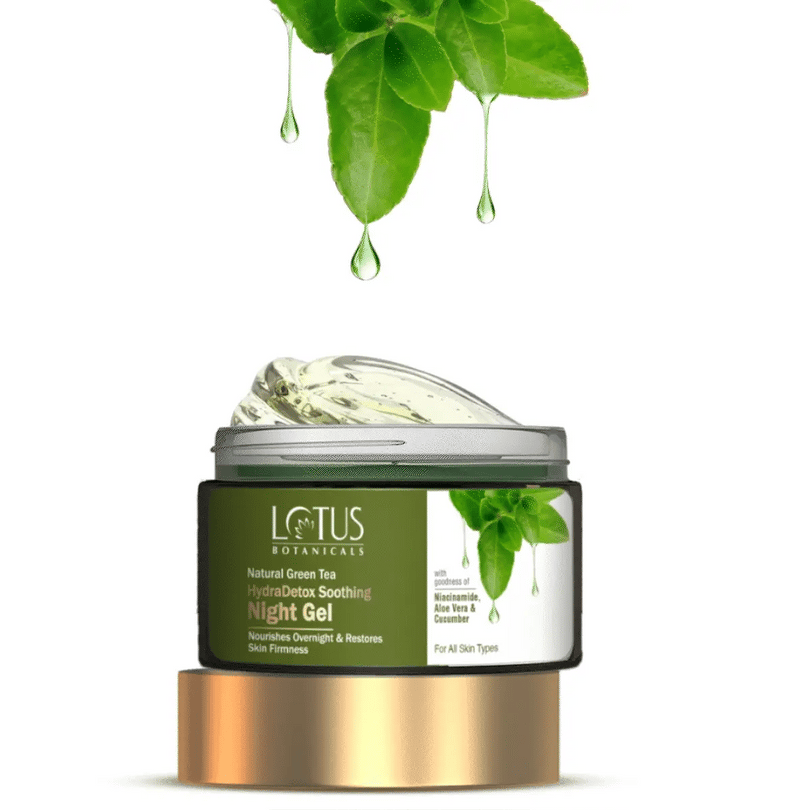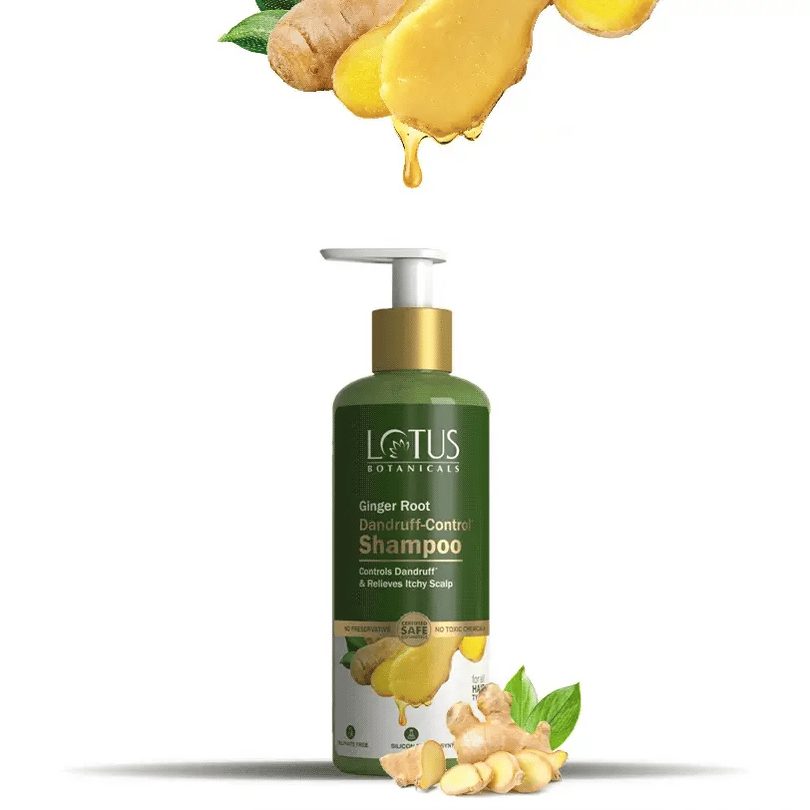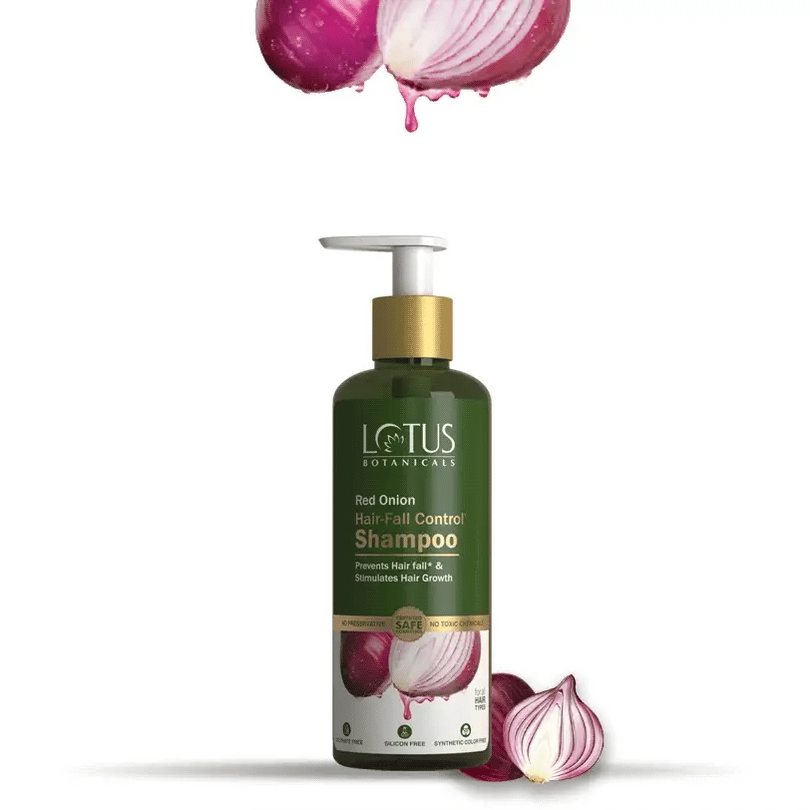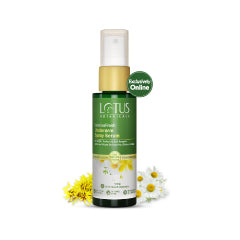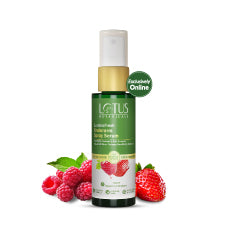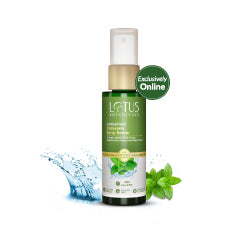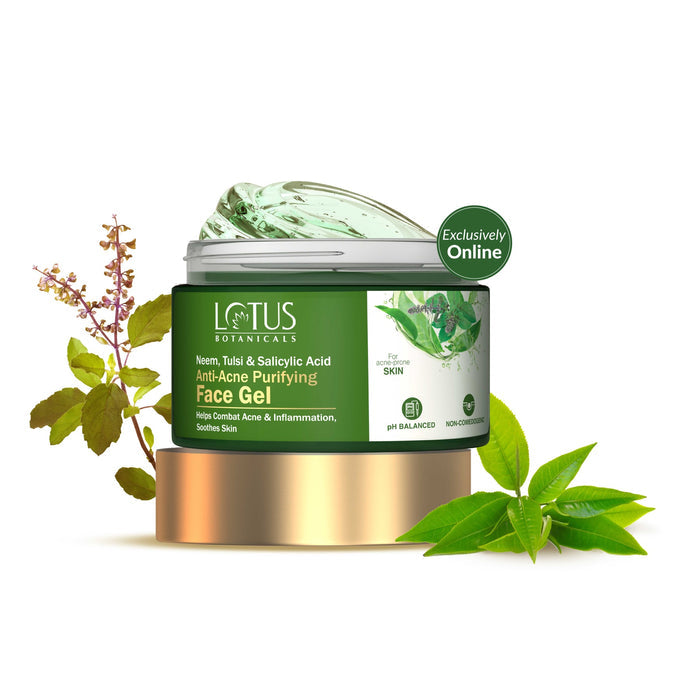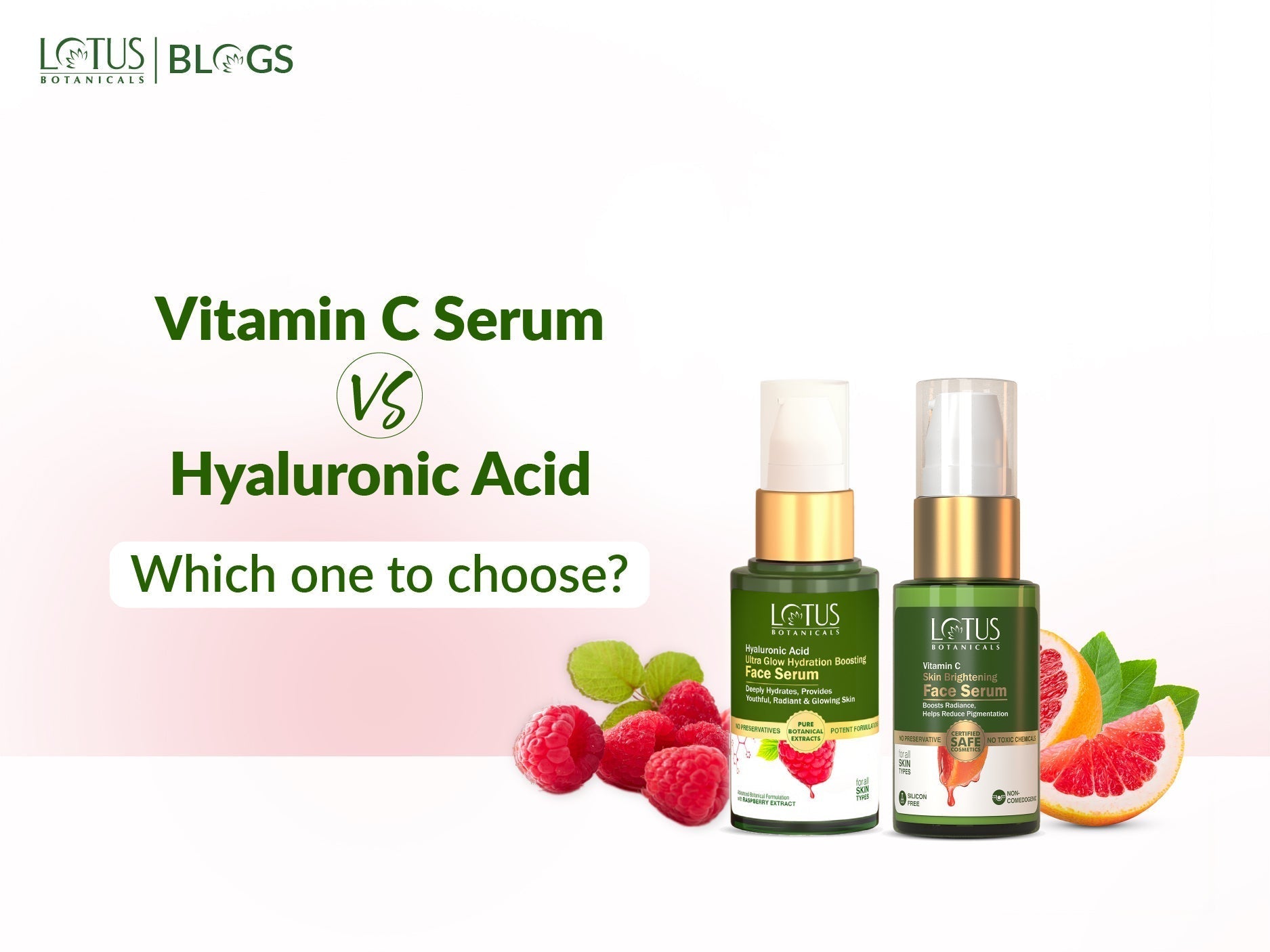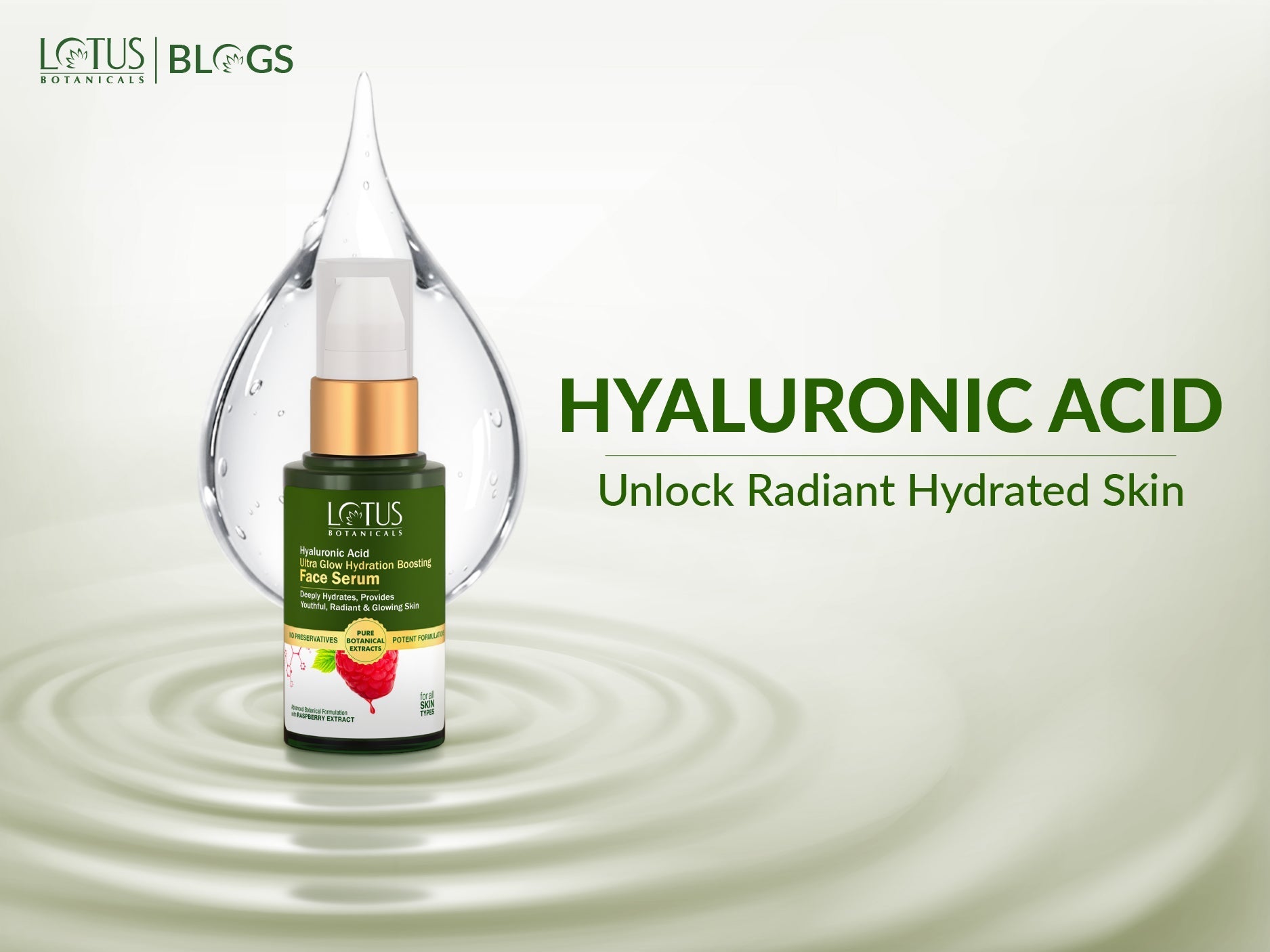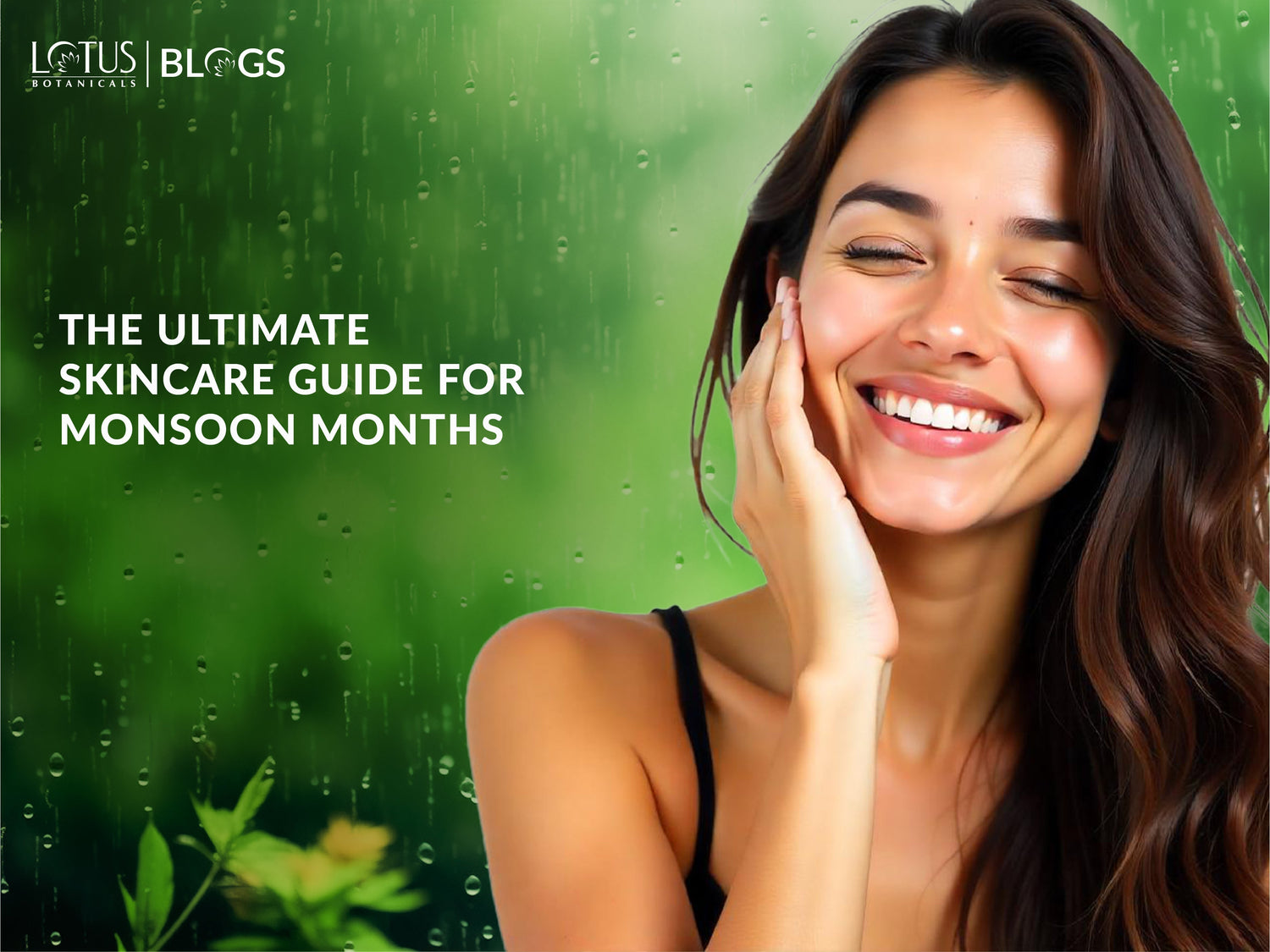
Highlights
-
Why Does Your Skin Act Up During the Rainy Season?
-
Should You Switch Up Your Face Wash When It’s Humid?
-
How Often Should You Really Wash Your Face in Monsoon?
-
Is Moisturising Still Important in Humid Weather?
-
What’s the Deal with Exfoliating in the Rainy Season?
-
Can You Skip Sunscreen on Cloudy Days? (Spoiler: Don’t!)
-
How to Keep Pimples and Fungal Infections Away
-
Are Home Remedies Worth Trying for Rainy Season Skincare?
Why Does Your Skin Act Up During the Rainy Season?
Ever wondered why your skin seems to go haywire as soon as the monsoon hits? You're not alone. Many people notice their skin behaving differently during the rainy season. One day you’re glowing, and the next, you’re battling pimples, rashes, or sudden itchiness. So, what's really going on?
What Causes Those Sudden Breakouts and Itchiness?
Here’s the thing: The rainy season brings a big jump in humidity. That extra moisture in the air can actually mess with your skin’s balance. You might think rain would make your skin feel fresh, but it often does the opposite.
- Humidity makes your skin produce more oil, especially if you already have oily or combination skin.
- Sweat doesn’t evaporate easily, so it mixes with oil and dirt, clogged pores.
- Mold and bacteria thrive in damp conditions, making infections and rashes more common.
- Sudden weather changes can trigger allergic reactions or make existing skin issues flare up.
For example, you might notice more pimples popping up on your forehead or an itchy rash on your arms after getting caught in the rain. If you skip your usual skincare routine because it feels too sticky outside, that just adds to the problem.
"According to dermatologists, humidity and sweating during monsoon can double acne risk compared to dry seasons."
Which Rainy Season Skin Problems Should You Watch Out For?
Not sure what’s “normal” during monsoon? Here are some of the most common rainy season skin problems:

- Acne breakouts: Oily skin plus sweat equals clogged pores and pimples.
- Fungal infections: Dampness makes it easy for fungus to grow, especially between toes or under arms.
- Rashes and irritation: Extra moisture can cause itching, redness, or small bumps.
- Dullness: Pollution mixed with humidity can leave your skin looking tired and uneven.
- Allergic reactions: Sudden temperature shifts can trigger hives or eczema flare-ups.
|
Problem |
Main Cause |
Where It Shows Up |
|
Pimples/Acne |
Oil + Sweat + Dirt |
Face (forehead, cheeks), back |
|
Fungal Infections |
Dampness & Humidity |
Feet, underarms, folds of skin |
|
Rashes/Irritation |
Sweat & Allergens |
Neck, arms, legs |
|
Dull Skin |
Lack of proper cleansing & pollution |
Face, neck |
If you’ve noticed any of these signs lately, don’t worry you’re not alone. The good news is there are easy ways to protect your skin even when the weather feels against you. Keep reading for simple solutions.
If you're curious about how specific ingredients like sandalwood powder can help soothe rainy season skin issues, check out our post on the magic of sandalwood for healing skin problems: read here.
About Lotus Botanicals
If you're searching for reliable skincare solutions made for Indian weather including the rainy season visit Lotus Botanicals. You'll find everything from day creams to serums, plus expert advice tailored for every season.
Q: Can rainy weather really make my acne worse?
A: Yes, High humidity increases oil production and clogs pores. This often leads to more breakouts during the monsoon.
Q: Why does my skin get so itchy after being out in the rain?
A: Wet clothes and lingering moisture create a perfect environment for rashes and fungal infections. Always dry off quickly.
Q: How do I stop my skin from feeling greasy in humid weather?
A: Use a gentle cleanser twice daily and opt for lightweight moisturizers. Avoid heavy creams during this season.
Should You Switch Up Your Face Wash When It’s Humid?
Ever notice your skin feels stickier and oilier when the humidity rises? You’re not alone. Monsoon and humid weather can totally change how your skin acts sometimes overnight. So, should you stick to your regular face wash or is it time for a switch? Let’s break it down with real advice that actually works.
How to Pick a Cleanser That Actually Suits Your Skin Now
Here’s the thing your skin’s needs can change with the weather. What works in winter might not cut it in humid months. In the monsoon, your face might feel greasy, sweaty, or even break out more often. That’s why picking the right cleanser is so important.
- If you have oily skin: Try a gentle foaming cleanser or a gel-based face wash. These help control oil but won’t leave you feeling stripped.
- If you have dry or sensitive skin: Look for a mild, hydrating cleanser. Even when it’s muggy, don’t go overboard with harsh products.
- If you’re acne-prone: A face wash with ingredients like salicylic acid can help keep pores clear.
- Avoid heavy, creamy cleansers: These can feel too much in humid weather and may clog pores.
“Humidity increases sweat and oil on your face, so using a lighter cleanser helps keep your pores happy.” – Dermatologist Dr. Asha Singh
|
Skin Type |
What to Use in Humidity |
What to Avoid |
|
Oily |
Foaming/Gel Cleanser |
Creamy or Oil-Based Cleansers |
|
Dry/Sensitive |
Mild Hydrating Cleanser |
Strong Foaming Cleansers |
|
Combination |
Gentle Gel Cleanser |
Heavy Creams |
Your face wash doesn’t need to be fancy or expensive just suited for your current skin mood. If you’re not sure where to start, explore options on the official Lotus Botanicals website: https://www.lotusbotanicals.com/.
How Often Should You Really Wash Your Face in Monsoon?
This is one of the most common questions I get. In humid weather, it’s tempting to scrub your face every time it feels sticky. But wait over washing can make things worse by stripping away natural oils and triggering more oil production.
Here’s what works best:
- Twice a day is enough: Once in the morning and once at night is the sweet spot for most people.
- If you sweat a lot or wear makeup: Add an extra rinse after workouts or removing makeup, but use gentle products.
- Avoid harsh scrubs: Exfoliate just once or twice a week, not daily even when it’s humid.
If you’re curious about exfoliation and active ingredients like AHA/BHA/PHAs, check out these frequently asked questions about acids in skincare.
“Washing too often can dry out your skin even in rainy season. Stick to twice daily unless you’ve been sweating buckets.” – Skincare Expert Priya Mehta
The truth is, listening to your skin is key. If it feels tight or flaky, scale back. If you’re breaking out more than usual, review your cleanser choice instead of washing more often.
Why Explore Lotus Botanicals?
If you’re on the hunt for clean beauty that actually delivers results especially when seasons change Lotus Botanicals offers science-backed options for every skin type. Their site features guides, tips, and product picks to help you build a reliable routine no matter what the weather throws at you. Don’t forget to peek at their special offers, too!
Q: Can I use my winter face wash during the monsoon?
A: You can, but if it feels too heavy or creamy during humid months, switch to something lighter like a gel-based cleanser.
Q: My skin gets oilier during monsoon—should I wash more than twice daily?
A: Not really. Washing too often can make things worse. Stick to twice a day and use blotting paper if needed.
Q: What if I get pimples during humid weather?
A: Look for a gentle cleanser with salicylic acid and avoid harsh scrubs. Check out more tips on our blog about dealing with tricky skin issues: 7 signs your serum isn’t working anymore.
Is Moisturizing Still Important in Humid Weather?
Ever walked outside on a muggy day and wondered, "Do I really need moisturizer right now?" If you’re sweating before you even leave the house, it feels like your skin should be hydrated enough. But here’s the thing humidity doesn’t always mean your skin is getting the moisture it needs.
Even when the air feels thick and sticky, your skin still loses water. You might notice oiliness on your face, but that doesn’t always mean your skin is truly hydrated. Sometimes, oily skin is actually a sign of dehydration your body’s way of trying to compensate.
- Humidity can make your skin feel greasy, but it doesn’t lock in essential hydration.
- Skipping moisturizer can lead to imbalances, causing breakouts or dry patches.
- Using the right product keeps your skin barrier healthy all year round.
“Many people with oily or combination skin think they can skip moisturizer in humid weather, but that can actually make things worse.” — Dermatologist Dr. Ritu Singh
How to Choose a Moisturizer That Won’t Feel Sticky
No one wants to feel like they’ve slathered on a layer of glue. So, how do you pick a moisturizer that doesn’t add to the stickiness of humid weather?
- Go for gels or lotions: These are lighter than creams and absorb quickly.
- Look for “non-comedogenic” labels: This means they won’t clog your pores.
- Avoid heavy oils: Ingredients like mineral oil and petroleum jelly can sit on top of your skin and feel greasy.
- Try hyaluronic acid: It hydrates without heaviness. For more details about this ingredient, read our guide on Hyaluronic Acid FAQs.
Your morning routine shouldn’t leave you feeling shiny by lunchtime. Here’s what works best for most people:
|
Skin Type |
Best Texture |
Key Ingredients |
|
Oily |
Gel-based |
Aloe vera, hyaluronic acid |
|
Combination |
Lotion/light cream |
Ceramides, glycerin |
|
Dry |
Lightweight cream |
Squalane, vitamin E |
If you want to try something new for day-time hydration, explore these day creams with lightweight formulas.
Lightweight Options That Work for Oily and Dry Skin
You might think “lightweight” means less effective. Not true, The right formula can hydrate deeply without making your face feel slick. Let’s break down some options that work for both oily and dry skin types:
- Water-based gels: Perfect if you hate heavy textures. They soak in fast and won’t clog pores.
- Lotion-style moisturizers: Great for normal to combination skin. Look for ones with plant extracts or antioxidants.
- Cream-gel hybrids: These give you just enough richness for dry areas but stay comfortable in humidity.
- Sunscreen with hydration: Save time and weight with multi-tasking sunscreens that also moisturise.
If you have oily skin but still get flaky spots (yes, it happens!), apply a thin layer of gel moisturizer all over, then dab an extra bit on dry areas. For more tips on dealing with tricky serum routines, see this article about serum effectiveness.
Your Trusted Source for Skincare Solutions: Lotus Botanicals
If you're looking for gentle yet powerful skincare products made just for Indian weather (including high humidity), check out Lotus Botanicals’ website. They offer everything from gel creams to sunscreen each designed with real-life conditions in mind. Plus, their expert guides cover topics like healing ingredients like sandalwood powder, and more.
Q: Should I skip moisturizer if my skin feels oily during humid days?
A: No! Oily skin still needs hydration. Use lightweight gels or lotions instead of skipping altogether.
Q: Can using the wrong moisturizer cause breakouts in humid weather?
A: Yes. Heavy creams or pore-clogging ingredients can lead to acne. Choose “non-comedogenic” products for best results.
Q: How often should I apply moisturizer in humid climates?
A: Once after cleansing is usually enough unless you wash your face multiple times a day or use harsh treatments.
What’s the Deal with Exfoliating in the Rainy Season?
Ever noticed your skin feels extra oily, sticky, or even a bit dull during the rainy season? You’re not alone. The monsoon brings humidity, sweat, and pollution that can leave your skin looking tired and clogged. That’s where exfoliating steps in but here’s the thing, you don’t want to overdo it or use harsh scrubs. So, what’s the right way to exfoliate when it rains every day? Let’s break it down.
How Often Should You Exfoliate to Avoid Dullness?
You might wonder, "Should I exfoliate more because my skin feels grimy?" The truth is, more isn’t always better. In fact, too much exfoliation during the rainy season can strip your skin and make things worse.
- Oily or combination skin: Try exfoliating 2–3 times a week.
- Dry or sensitive skin: Stick to once a week.
- Normal skin: Twice a week is usually enough.
Why not every day? Because your skin barrier gets weaker in humid weather. Over-exfoliating can lead to redness, sensitivity, or even breakouts exactly what you’re trying to avoid.
“Humidity makes your pores more likely to get clogged. But exfoliating too much can damage your protective layer.” — Dermatologist Dr. Priya Sharma
Here’s what works best: Pick a set day for exfoliation so you don’t forget. For example, try Wednesdays and Saturdays if you have oily skin.
|
Skin Type |
Exfoliation Frequency |
Recommended Product Type |
|
Oily/Combination |
2-3 times/week |
Chemical (AHA/BHA) |
|
Dry/Sensitive |
1 time/week |
Mild enzyme or physical scrub |
|
Normal |
2 times/week |
Chemical or gentle physical |
Gentle Exfoliators That Won’t Irritate Your Skin
If you’re worried about irritation, you’re absolutely right to be cautious. The rainy season makes your skin more sensitive than usual. So, harsh scrubs are a big no-no.
- Chemical exfoliants: Products with mild AHAs (like lactic acid) or BHAs (like salicylic acid) gently remove dead cells without scrubbing.
- Enzyme-based exfoliators: Think papaya or pumpkin enzyme masks they dissolve dead skin naturally.
- Mild physical scrubs: If you love a scrubby feel, go for finely milled oatmeal or rice powders never large gritty particles.
If you’re new to chemical exfoliants like AHAs or BHAs, read this quick guide on AHA/BHA/PHAs FAQs.
"Look for products labeled as 'gentle' or 'for sensitive skin.' They usually have smaller particles or lower acid concentrations." — Skincare expert Ananya Mehra
- Patch test first: Always try a new product on your wrist before putting it on your face.
- Avoid harsh tools: Skip loofahs and rough washcloths during monsoon.
- Moisturize after: Exfoliating leaves your skin thirsty always follow with a hydrating cream or serum.
If you want some product ideas, browse through Lotus Botanicals’ collection of skincare essentials. Their gentle formulas are perfect for monsoon care.
Your Go-To Source for Skincare Solutions: Lotus Botanicals
If you're serious about healthy skin this rainy season, check out Lotus Botanicals. From gentle cleansers to nourishing creams and safe exfoliants, they’ve got everything you need to make rainy days glow days. Don’t miss their helpful blog for more tips like how to spot if your serum isn’t working anymore.
Q: Can I use the same exfoliator all year round?
A: Not always! Switch to gentler options in the rainy season since your skin gets more sensitive and reactive.
Q: What should I do if my skin gets red after exfoliating?
A: Stop using that product immediately. Soothe with aloe gel and moisturize. Try gentler options next time.
Q: Should I moisturize after exfoliating during monsoon?
A: Absolutely, Your skin needs hydration after exfoliation especially with all that humidity outside.
Can You Skip Sunscreen on Cloudy Days? (Spoiler: Don’t!)
Ever looked outside, seen grey skies, and wondered if you could finally give your sunscreen a break? You’re not alone, but here’s the thing clouds don’t mean you’re safe from sun damage. In fact, you might be surprised by how much UV radiation still reaches your skin. Let’s clear up the confusion once and for all.
Why UV Protection Still Matters When the Sun’s Hiding
Think clouds block all UV rays? Not quite. Up to 80% of the sun’s UV rays can pass through clouds. So even if you can’t see the sun, it’s still working on your skin.
- UVA rays: These penetrate deeper into the skin and are present all year round even on cloudy days.
- UVB rays: These cause sunburn and can also sneak past clouds.
“Up to 80 percent of UV radiation can reach your skin on cloudy days.” – Skin Cancer Foundation
Picture this: You head out for a walk on a cool, overcast day. You skip sunscreen because, well, what’s the point? Later, your cheeks look pink and feel tight. That’s sun damage, even without direct sunshine.
|
Weather |
% of UV Rays Reaching Skin |
Sunscreen Needed? |
|
Clear & Sunny |
100% |
Yes |
|
Partly Cloudy |
85% |
Yes |
|
Overcast |
70–80% |
Yes! |
|
Rainy |
60–75% |
You bet! |
- Sunscreen is a daily habit, just like brushing your teeth.
- Broad-spectrum sunscreens protect against both UVA and UVB rays.
- If you’re near water or sand, UV rays bounce and increase exposure even with clouds above.
Sunscreens That Don’t Feel Heavy in the Rainy Season
No one likes sticky or greasy sunscreen especially when it’s humid or rainy outside. Good news, there are lightweight options that won’t clog pores or feel uncomfortable.
- Gel-based sunscreens: These absorb fast and leave no white cast. Great for oily or combination skin!
- Matte finish formulas: Keep shine under control in muggy weather.
- Lotion sprays: Super easy to reapply when you’re on the go.
- Vitamin C infused sunscreens: Offer extra antioxidant benefits while protecting from UV.
If you hate heavy creams, try a gel or fluid sunscreen. You’ll barely notice it’s there but your skin will thank you later!
Here’s what works best for many people during monsoon or humid months:

- Look for “non-comedogenic” labels so they don’t block pores.
- Aim for SPF 30 or higher for reliable protection.
- Reapply every two hours if you’re outdoors even if it rains.
- Shop lightweight sunscreen options here.
Your Trusted Source: Lotus Botanicals
If you’re searching for gentle but effective sunscreens and other skincare solutions, check out the complete range at Lotus Botanicals. They offer everything from daily SPF to nourishing day creams so your skin stays healthy every season.
Q: Do I really need sunscreen indoors on cloudy days?
A: If you spend time near windows or work by natural light, some UV rays still reach you. It’s best to apply sunscreen daily.
Q: What type of sunscreen is best for oily skin in humid weather?
A: Gel-based or matte-finish sunscreens work well. Try formulas labeled non-comedogenic to avoid breakouts. Check out our recommendations here.
Q: Can I skip sunscreen if I wear makeup with SPF?
A: Makeup with SPF helps but isn’t enough alone. Always use a dedicated sunscreen under your makeup for strong protection.
How to Keep Pimples and Fungal Infections Away
Ever noticed your skin acting up as soon as the rains hit? You’re not alone. The monsoon brings relief from the heat, but it also brings a whole new set of skin problems especially pimples and fungal infections. Let’s talk about how you can keep your skin clear and comfortable all season long.
Simple Habits to Prevent Rainy Season Skin Problems
The truth is, your daily routine matters more than you think. Small changes can make a big difference in keeping pimples and fungal infections away. Wondering what works best? Here’s what you need to know:
- Keep Your Skin Dry: Fungi love dampness. After coming in from the rain, dry off properly especially between toes, underarms, and skin folds.
- Change Out of Wet Clothes Fast: Don’t sit around in damp clothes. They’re a perfect breeding ground for both pimples (think body acne) and fungal infections.
- Shower After Getting Wet: Rained on? Take a quick shower with mild soap to wash away sweat, dirt, and germs.
- Use a Clean Towel Every Day: Reusing towels can spread bacteria and fungus.
- Avoid Touching Your Face: Your hands carry germs. Touching your face makes breakouts worse.
- Wear Loose, Breathable Clothing: Synthetic fabrics trap moisture. Go for cotton or linen whenever possible.
- Keep Your Hair Off Your Face: Oily hair touching your skin can trigger pimples, especially during humid weather. Need some ideas? Check out these hair care tips.
- Stay Hydrated: Drink plenty of water. It helps flush out toxins that can cause acne.
“Fungal infections spike by nearly 30% during monsoon months due to increased humidity,” says Dr. Priya Mehra, dermatologist.
|
Habit |
Why It Works |
|
Change wet clothes quickly |
Keeps skin dry; prevents fungal growth |
|
Avoid oily skincare products |
Lowers chances of clogged pores and breakouts |
|
Shower after getting drenched |
Removes bacteria, sweat, and pollutants |
Products That Actually Help with Monsoon Breakouts
You might ask—what should I actually use on my skin when breakouts or rashes pop up? Here’s the thing: not all products are made for monsoon weather. Some just clog your pores or make things worse! Here are some reliable options that really work:
- Gentle Foaming Cleanser: Cleans out sweat, dirt, and oil without stripping your skin’s natural barrier. Try using one with mild ingredients like aloe vera or green tea.
- Sulphur or Salicylic Acid Spot Gel: These ingredients fight acne-causing bacteria and help clear up pimples fast. Need more info about these actives? Here’s a handy guide: AHA/BHA/PHA FAQ.
- Lightweight Moisturizer: Don’t skip moisturizer, Go for gel-based or oil-free creams so you stay hydrated without feeling greasy. A good pick: Vitamin C Day Creme.
- Mild Antifungal Powder or Cream: For itchy patches or redness (like on your feet or groin), a medicated powder keeps moisture away and treats infection at the same time.
- Sunscreen for Humid Weather: Yes, you still need it! Rainy days mean UV rays sneak through clouds. Try a non-comedogenic sunscreen like this one for oily skin.
“Look for products labelled ‘non-comedogenic’—they’re less likely to clog pores and trigger breakouts,” advises Dr. Sneha Kapoor.
If you’re curious about what else should (or shouldn’t) go in your routine, see our guide on serums that no longer work for you.
Your Go-To Source for Monsoon Skincare Solutions: Lotus Botanicals
If you’re hunting for safe, effective skincare products this rainy season, check out Lotus Botanicals. Their range is packed with nature-inspired solutions—ideal for battling monsoon breakouts and keeping your skin healthy, come rain or shine!
Q: Can I use the same products in monsoon as I do in summer?
A: Not always! Switch to lightweight, non-greasy formulas during the rainy season to avoid clogged pores and extra oiliness.
Q: How do I know if it’s a fungal infection or just a pimple?
A: Fungal infections often look red, itchy, or have a ring-like shape; pimples usually appear as bumps with pus or blackheads.
Q: Is home treatment enough for severe fungal infection?
A: If the rash spreads fast or doesn’t improve with OTC creams, see a dermatologist right away for stronger treatment.
Are Home Remedies Worth Trying for Rainy Season Skincare?
Ever find your skin acting up as soon as the rainy season rolls in? You’re not alone. Humidity, sweat, and grime can clog pores fast. Suddenly, your face feels sticky or you’re breaking out more than usual. So, is it a good idea to try home remedies for rainy season skincare? Let’s get into what actually works and what to skip.
Easy DIY Masks That Can Soothe Your Skin
You don’t need a fancy spa appointment to calm your skin during the monsoon. In fact, some kitchen staples can really help soothe irritation and control oil. But which ones are worth a shot?
- Oatmeal & Yogurt Mask: Oatmeal gently exfoliates and calms itchiness. Yogurt’s lactic acid brightens skin and balances moisture.
- Sandalwood Paste: Known for its cooling effect, sandalwood can help reduce inflammation and redness. Get all the details on using sandalwood from this expert guide.
- Honey & Turmeric Mix: Honey locks in moisture, while turmeric fights bacteria handy if you’re dealing with breakouts.
- Cucumber & Aloe Vera Gel: Both are super hydrating and help calm irritated skin after a humid day outside.
Here’s the thing: these masks are quick to whip up and don’t require hard-to-find ingredients. Plus, they’re gentle enough to use once or twice a week.
“Natural ingredients like sandalwood and aloe vera have been used for centuries to treat skin woes especially during humid weather.” — Skincare Expert
|
DIY Mask |
Main Benefit |
How Often? |
|
Oatmeal & Yogurt |
Soothes irritation, gentle exfoliation |
1–2 times/week |
|
Sandalwood Paste |
Cools skin, reduces redness |
As needed |
|
Honey & Turmeric |
Antibacterial, moisturising |
1–2 times/week |
|
Cucumber & Aloe Vera |
Hydration, soothing |
As needed |
Tip: Always patch-test new masks on your wrist before applying them to your face.
Which Ingredients Should You Actually Avoid?
If you’re thinking, “Hey, isn’t natural always safe?”—hold on! Some home remedies floating around online can do more harm than good during the rainy season.

- Lemon Juice: Sure, it’s packed with vitamin C. But on rainy days, your skin is already sensitive. Lemon juice can cause stinging or even burns.
- Baking Soda: It’s tempting to use for exfoliation, but baking soda can mess with your skin’s pH and lead to dryness or breakouts.
- Toothpaste: Some say it dries out pimples. In reality? It usually leaves behind red, irritated patches.
- Raw Egg: Eggs have proteins but using them raw brings risks of infection especially in humid conditions where bacteria thrive.
- Sugar Scrubs: While scrubbing feels satisfying, rough sugar granules can damage delicate facial skin when humidity makes it softer.
The truth is not every “natural” fix is right for everyone. If your skin is feeling extra sensitive this season, it’s best to keep things simple and gentle.
Why Trust Lotus Botanicals for Skincare?
If you want reliable skincare products that suit the rainy season (and beyond), try exploring the range at Lotus Botanicals. Their formulas use nature-inspired ingredients minus harsh chemicals so you can treat your skin safely no matter what the weather throws at you.
Q: Are home remedies safe for all skin types?
A: Not always. What works for one person might irritate someone else. Always patch-test first and stop if you see redness or stinging.
Q: How often should I use DIY masks during the rainy season?
A: Once or twice a week is usually enough. Overdoing it can upset your skin’s balance especially if it’s sensitive.
Q: Can I mix different home remedy ingredients together?
A: Stick with tried-and-true combos like honey with turmeric or oatmeal with yogurt. Avoid risky mixes that could irritate your skin.
If you're curious about other skincare routines or how serums work during monsoon, check out our guide on serum effectiveness here.
Conclusion: Your Go-To Rainy Season Skincare Routine
Key Takeaways for Happy, Healthy Skin
Ever felt like your skin just can’t decide what it wants during the rainy season? One minute you’re oily, the next you’re dealing with breakouts. Here’s the thing monsoon weather can really mess with your usual routine. But don’t worry, you can still have glowing, happy skin if you follow a few simple rules.
- Cleanse twice daily: Humidity and sweat mean clogged pores. A gentle cleanser in the morning and night helps prevent breakouts.
- Don’t skip moisturizer: Even if your skin feels oily, a lightweight, non-comedogenic moisturizer keeps your barrier strong.
- Sunscreen is still a must: UV rays don’t take a break just because it’s cloudy. Use something like this Vitamin C Sunscreen every single day.
- Exfoliate, but not too much: Once or twice a week is enough to keep dead skin away without irritating your face.
- Listen to your skin: If something feels off like extra oiliness or dryness adjust your products. Need help? Here’s how to know when your serum isn’t working: 7 signs your serum is not working anymore.
“Humidity can increase oil production and clog pores. Proper cleansing and moisture balance are key for monsoon skincare.” — Dermatologist tip
How to Make These Tips Part of Your Daily Life
Okay, so you know what to do but how do you actually stick to these habits? The truth is, small steps work best. Here’s what works for most people (myself included!):
- Keep products where you’ll use them: Store cleanser and moisturizer by the sink so you won’t forget them.
- Set reminders: Put a sticky note on your mirror or set an alarm for sunscreen application.
- Create a quick routine: Your rainy season skincare shouldn’t take more than five minutes morning and night.
- Treat yourself weekly: Choose one day for gentle exfoliation or a soothing face mask. Try something new—like a sleeping mask! Get ideas here: Pamper Your Skin Like Never Before With Sleeping Face Mask.
- Track what works: Notice less breakouts or irritation? Stick with that combo!
|
Routine Step |
When to Use |
Monsoon Tip |
|
Cleansing |
AM & PM |
Mild, foaming cleanser works best |
|
Toning (optional) |
After cleansing |
Avoid harsh alcohol-based toners |
|
Moisturizing |
AM & PM |
Lighter gel or water-based formulas recommended |
|
Sunscreen |
Last step in AM |
No matter how cloudy it is! |
|
Exfoliation |
1–2 times/week |
Avoid over-exfoliating in humid weather |
If you want more in-depth product advice or deals on skincare essentials, check out the official site: Lotus Botanicals. You’ll find everything from cleansers to sunscreen in one place!
Q: Can I skip sunscreen on rainy days?
A: No, UV rays still reach your skin even when it’s cloudy. Always apply sunscreen before heading out.
Q: What if my skin feels sticky after moisturizing?
A: Try switching to a gel-based or lightweight lotion. Heavy creams can feel greasy in humid weather.
Q: How often should I exfoliate during monsoon?
A: Once or twice a week is enough. Overdoing it can irritate your skin and make things worse.
Highlights
-
Why Does Your Skin Act Up During the Rainy Season?
-
Should You Switch Up Your Face Wash When It’s Humid?
-
How Often Should You Really Wash Your Face in Monsoon?
-
Is Moisturising Still Important in Humid Weather?
-
What’s the Deal with Exfoliating in the Rainy Season?
-
Can You Skip Sunscreen on Cloudy Days? (Spoiler: Don’t!)
-
How to Keep Pimples and Fungal Infections Away
-
Are Home Remedies Worth Trying for Rainy Season Skincare?







